The Tamaskan is a crossbreed dog mix between Siberian Huskies, German Shepherds, and Alaskan Malamutes.
Although these dogs were bred to resemble wolves, they are very friendly and tame with their owners.
Tamaskan dogs are easily trainable and have life expectancies that are longer than those of most other dogs.
Tamaskans typically cost $1,000 to $2,000 USD.
TABLE OF CONTENTS
What is a Tamaskan?
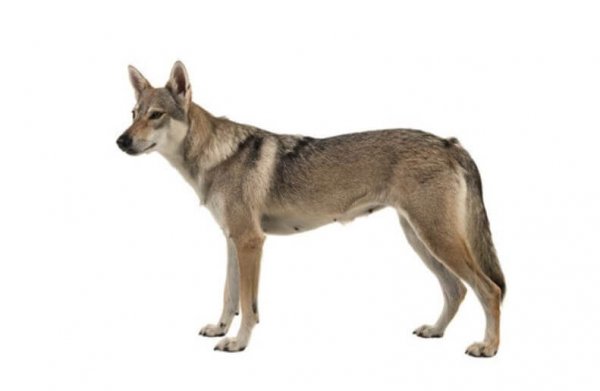
The Tamaskan Dog is a relatively new breed, produced to look very much like a wolf, but with no wolf DNA in the dog at all. The goal of all the people who contributed to the process of creating the Tamaskan was to produce a new breed that possessed the beautiful physical features of wolves, along with the trainability and loyalty of a domesticated dog.
The development of this breed began in the 1980s when breeders brought five dogs with Siberian Husky traits from the UK to the United States. They then crossbred the dogs with Siberian Huskies, German Shepherds, and Alaskan Malamutes. For a while, the offspring of this breeding was called “Wolf Dogs”, and later given an official name, “Utonagan”.
In 1988 the people breeding the Utonagan dog form a club called The Northern Inuit Society. But due to arguments among the members of the club about breeding and rating standards for the dog, a woman named Lynn Hardey decided to break off from the group of people breeding Utonagans, and start a club of her own that implemented stricter health standards for the breed, mandating hip and eye testing for all puppies. She called the new club “The British and International Utonagan Society”.
Lynn wanted her club to earn a good reputation in terms of selective breeding, and accurate and true documentation of health issues and pedigrees. She refused to allow breeding between siblings and faulty documentation of lineages and health records and went to Lapland to perfect an even newer and better breed.
It was clear that the dog she was developing was not a Utonagan, and she closed down the British and International Utonagan Society. She purchased seven sled racing dogs to breed with her Utonagan dogs, and while there is no proof of this, it has been suggested that at least some of the dogs she bought descended from the Czechoslovakian Wolfdog.
In 2006 Lynn moved to Finland taking seven dogs from her personal kennel, the Blustag Kennel. In Finland, she bred her dogs with the seven dogs purchased in Lapland and continued the breeding program with other top dogs purchased in Finland. In February 2006 Lynn established the Tamaskan Dog Register with her daughter Jennifer serving as secretary. From the start of working with this new breed, Lynn was very strict about keeping accurate records about every dog born and bred, and in 2008 introduced mandatory DNA testing for the breeding dogs.
Today, the Tamaskan Dog Register sets standards for other Tamaskan clubs around the world. Tamaskan dog owners and breeders can be found in America, Europe, Australia, and Canada.
Appearance
With round heads, long muzzles, and upright, triangular ears, the Tamaskan closely resembles a Siberian Husky. While their bodies are robust and their legs are muscular, the Tamaskan’s legs are relatively thin and their paws are disproportionately small.
The Tamaskan has a bushy tail like that of the Alaskan Malamute, but it does not curl over its back. When Tamaskans are resting the tail hangs down loosely, and when they play the tail is held erect. Tamaskans have black noses, and their eyes are usually black or brown.
The Tamaskan lives for 14 or 15 years, which is a comparatively long life for a large, purebred dog.
Tamaskan Weight and Size
The Tamaskan looks more like a Siberian Husky than any other breed used to create it but is a larger and stronger dog. This breed is medium to large, with a striking presence. The Tamaskan’s weight is 55 – 88 pounds (25-40 kilo) and stands at 24 – 28 inches (61 – 71 cm) tall.
Common Colors
Tamaskans have three distinctive color pairs: wolf-gray, black-gray, and red-gray, with a black overlay. This breed always has a “mask” on its face. There are three types of masks – minimum, medium, and full – but in every case, the mask must reach the nose and be completely symmetrical. A dog with patches of color on its face is not a true Tamaskan.
Coat
Tamaskans’ coats so closely resemble those of Timber Wolves, that on at least one occasion a pet Tamaskan was mistaken for a wolf and shot dead by a hunter. The Tamaskan’s coat is double layered to protect it against rain and snow, and freezing temperatures.
Personality and Temperament
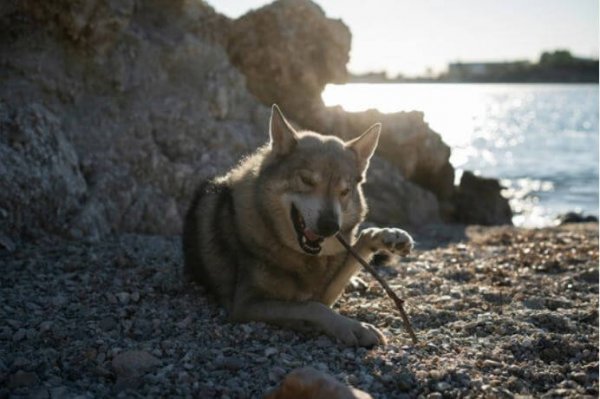
Tamaskans are “hybrid” dogs – they have been bred to possess the best traits of all the dogs that contributed to their genetic makeup. Tamaskans are extremely intelligent and develop strong bonds with their owners. This is a very adaptable breed that can do well living with large families in private homes or singles in apartments. Likewise, when you are home and resting, Tamaskans will be content to relax alongside you. But when you go out for a walk, they can be as active as you are, and won’t run out of energy until you decide you are tired and want to go home.
Tamaskans are very gentle and love to be near their owners. They prefer to accompany you to work, even if it’s indoors, to staying at home alone, even if they can be outside.
If you leave your Tamaskan alone for too many hours per day, he can suffer from separation anxiety and become destructive. As puppies, they should be kept in crates when you can’t supervise their behavior.
Tamaskans rarely bark and get along well with other dogs and all types of animals. If you introduce your Tamaskan to your birds, rabbits, horses, and cats from a young age, he will understand that they are part of your pack and won’t ever bother them.
Along with being so intelligent, Tamaskans can also sometimes be stubborn or test limits, as they grow from puppy to adult. They need motivation such as treats, or the satisfaction of successfully completing a “job”, to remain happy and obedient dogs.
While by nature Tamaskans are not aggressive, they are extremely sensitive to their owner’s emotions. If your Tamaskan senses you are afraid, or if a stranger approaches while you sleep, he will bark to alert you and to scare off the intruder.
Behavior around other dogs
Tamaskans thrive on being members of packs – be it animal or human. Therefore, they get along well with other dogs and animals. Your Tamaskan will enjoy having another dog in his family unit, and will also love going to dog parks to meet old and new friends.
Is a Tamaskan a good Family Dog?
If you want a dog who will become a prominent member of your family, a Tamaskan is a great choice. This breed loves people, does well with children, and are friendly and extroverted around strangers. However, if you do raise a Tamaskan in a home with children, it is very important to teach your dog that you are the boss and he is at the bottom of the family hierarchy. You don’t want your Tamaskan to decide he comes before the kids when it comes to eating and choosing where to sit.
How to Train a Tamaskan

When you first bring your Tamaskan puppy home, put him straight into a crate. Crate training will make it easier to teach your dog that you are in charge, and will make it less difficult to prevent him from destroying your home when you aren’t around to supervise his behavior. The optimal crate size is 30 inches wide X 48 inches long X 32 inches high.
Since Tamaskans are so smart, they are easy to train and actually like to learn new commands. The three important things to keep in mind when training your Tamaskan are early socialization, patience, and persistence. If you are a new dog owner and don’t have the time or interest in training a dog, then don’t get a Tamaskan.
When you train your Tamaskan you must be confident and firm. There is no need to be harsh or overbearing. Tamaskan’s will quickly learn to obey you if you are lavish with your treats and praise. And Tamaskans are more willing to follow your lead if they have an actual task to perform, as opposed to a meaningless trick. You can teach your Tamaskan to compete in dog sports such as flyball, mushing, agility, and pulling.
Tamaskans can develop a number of unpleasant behaviors. If you teach your Tamaskan puppy that these behaviors are unacceptable, he will quickly learn to control or eliminate them altogether.
Howling and barking can be stopped by holding the dog’s muzzle closed and saying “no speak”. But only do this when your Tamaskan barks randomly. If someone knocks on the door or approaches your yard from outside, you want your dog to bark!
To prevent your Tamaskan from chasing moving objects or animals, teach him to come, sit, and stay as early as possible. The moment he fails to obey any of those three commands, he should be leashed.
To keep your Tamaskan from digging up your entire yard, provide him with a sandbox, and teach him that is the only place he is allowed to dig.
If your puppy nips you, all you need to do is yelp loudly, and if he thinks he has hurt you he will soon stop this annoying behavior. If he likes to chew on your slippers, books, or furniture legs, immediately tell him “no” when he does so, remove him from the area, and provide him with a chew toy. Your Tamaskan must be taught what he can play with, and what belongs to you and he is not permitted to touch.
How To Care For a Tamaskan
Exercise Requirements
With DNA from so many different working dogs, the Tamaskan is a bundle of boundless energy. Tamaskans need at least one long walk or jog a day, and additional sessions of play or exercise will only improve his health and mood. Once you train your Tamaskan to come when you call, you let him off-leash in large open areas so he can run to his heart’s content.
Grooming and Shedding
Even though Tamaskans have double coats, they are not high-maintenance when it comes to grooming. You should brush your dog once a week for most of the year, and once a day during the twice-yearly shedding seasons when the weather changes. Use a wide-toothed comb to release matted fur, and a paddle brush for removing short, stray hairs.
Tamaskans have a minuscule, feather-like hairs in their ears that need to be manually plucked out regularly.
You only need to bathe your Tamaskan if it gets really dirty. Use a dog shampoo for coarse fur.
Brush your Tamaskan’s teeth every day, using toothpaste specially made for dogs. After giving your new puppy a few days to get accustomed and attached to you, put some toothpaste on your finger and rub his teeth. Once he gets used to the taste, you can start using a toothbrush.
What to Feed A Tamaskan
Tamaskans should be fed food that is high in nutrients and calories, to replenish what they burn off during intensive physical activity. Different age dogs need different kinds of kibble, but all Tamaskans need meat in their diets. Even young puppies need a few pieces of raw meat every day. Puppies need frequent feedings, but by age five months two meals a day is sufficient.
An adult Tamaskan will consume five to seven pounds of meat per day. That can get expensive over the years, so keep that cost in mind before deciding to purchase a Tamaskan puppy!
There is a common myth that says if you feed your domesticated dog raw meat, it will bring out the wild instincts in him and make him aggressive. here is no truth to that myth. In fact, feeding your Tamaskan raw meat will not only supply him with the protein and nutrients he needs, but it will require zero preparation on your part. ]
The best kinds of meat products for Tamaskans are beef, chicken, and venison. Never feed your Tamaskan pig meat, as it contains an excess of growth hormones that could negatively affect your pet’s health.
No matter how tempting it might be, don’t give your Tamaskan bones. The harder beef bones can break his teeth, and chicken bones can splinter and damage his internal organs.
Known Health Problems
While the Tamaskan is a new breed with minimal risk of health problems, this hybrid dog can still develop certain congenital conditions. The earlier these conditions are diagnosed and treated, the better chance your Tamaskan will have of continuing to lead a full and normal life.
Hip Dysplasia causes the hip joints to become dislocated and first appears when in Tamaskan puppies at age four months. It causes the dog to walk with a rocking gait and will cause extreme pain as it progresses. This debilitating condition can be treated with weight loss and pain medication, or surgery.
Cryotircgism is a hereditary condition that prevents one of the dog’s testicles from descending. This condition can cause pain, a failure to produce sperm, and eventually cancer in the retained testicle. The only treatment for Cyroticgism is to neuter the dog. Tamaskans with this condition cannot be used for breeding.
Epilepsy causes chronic, repeated seizures for the duration of the dog’s life. The severity of the seizures varies from dog to dog, but they can be controlled with medication.
Degenerative Myelopathy can affect older Tamaskans and is inherited through German Shepherd genes. This condition causes weakness in the dog’s hind legs and loss of coordination when walking. Eventually, a dog with this disease becomes incontinent and finally paralyzed. There is no cure for Degenerative Myelopathy.
Buyer’s Guide
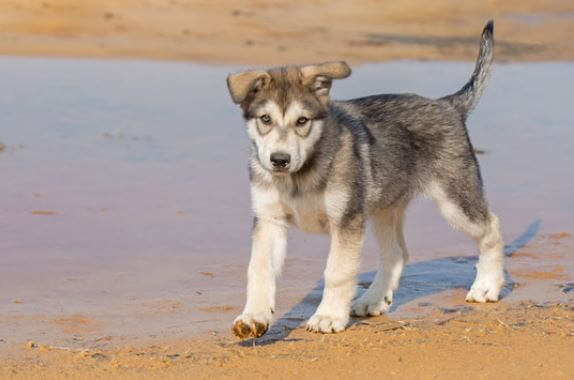
How to Choose a Tamaskan Puppy
Since Tamaskans are still a rare breed, and there are not many breeders who raise them, you will probably have to be on a waiting list to get a puppy. Once your number comes up, ask to meet the litter you will be choosing a puppy from. Make sure the puppy you decide to buy doesn’t show any signs of shyness, fearfulness, or aggression, as none of those traits are common in Tamaskans.
Be prepared to start socializing and training your Tamaskan puppy the day you bring it home. But keep in mind that Tamaskans mature slowly, and won’t be fully mature physically and mentally until they are two years old. Training a Tamaskan puppy is therefore a long, ongoing process.
Good breeder resources to start your search with are “Puppies by Ratliff” in the United States, and “Blustag Arctic Breeds” in the United Kingdom. The “Tamaskans Against Puppy Mills” website provides a list of all the recognized registries and clubs that raise, breed, and sell Tamaskans. Be careful about buying any dog from a private seller over the internet. There is no way of knowing if the dog offered for sale is a purebred Tamaskan.
How Much Do Tamaskans Cost?
Tamaskan puppies cost between $1000 and $2000 dollars. Add to the price of the pup your own travel costs for the initial visit to the breeder to choose a puppy, and if you can’t take it home immediately, the cost of a second trip to pick the puppy up.
Famous Tamaskans
Tamaskans are so eye-catching and easy to work with that they have been chosen for numerous roles in live and recorded productions.
In 2010 a Tamaskan named “Tuffy” became the mascot for the NC State Wolfpack. That is the nickname referring to all the North Carolina State athletic teams. Another Tamaskan, “Tuffy 11” was purchased in 2016. Together, the two dogs appear on the sidelines at football games and other sports events. The identities of the owners are kept secret to protect their privacy. The owners have taken responsibility for the training of both dogs, to prepare them for their very public roles as mascots.
Tuffy was a family pet until he was recruited to work for the university. At that point, he received extra training to prepare him for his important role. But nobody has been able to keep him from repeatedly attempting to escape from wherever he is kept enclosed. He has earned the nickname “Houdini” as a result!
Tuffy II began training at age nine weeks, and trains for 16 hours per week. When Tuffy gets too old to appear in public, Tuffy II will continue to serve as the university mascot on his own.
Another famous Tamaskan is Luchta from Seattle, who in 2016 played the part of a wolf in a Broadway production of Arthur Miller’s “The Crucible”. This Tamaskan spent eight months performing, cared for by the world-renowned animal handler William Berloni.
The saddest story about a Tamaskan involved Kaoru, a four-year-old therapy dog who worked with Autistic children. One day in 2017, while walking with her owner and a group of nine other dogs in a British Columbia forest, Kaoru was spotted by a wolf hunter. The man mistook the majestic dog for a wolf and shot her dead. It was a miracle that Kaoru’s owner was hurt herself.
Quick Breed Summary Table
| Breed Characteristics | |
| Size: | Up to 28 inches |
| Weight: | Up to 88 pounds |
| Lifespan: | 14 – 15 years |
| Coat: | Double, thick, straight |
| Color: | Wolf-gray, black-gray, and red-gray |
| Do They Shed: | Sheds heavily once or twice a year |
| Temperament: | Friendly, Obedient, Tolerant |
| Intelligence: | Extremely intelligent |
| Socialization: | Loves being with both people and other dogs |
| Destructive Behavior: | Destructive when left alone for too long |
| People Skills: | Friendly and extroverted around strangers |
| Good with Children: | Tolerant and loving towards children |
| Activity Levels: | High energy, require lots of exercise |
Summary
If you are interested in owning a dog that looks like a wild wolf, but is in fact a very trainable dog, the Tamaskan might be the breed for you. While the Tamaskan is still a new and rare breed, it has proved to possess very desirable personality traits. Tamaskans are intelligent, loyal, and great family dogs. They are easy to train and have no inborn desire to run away or hunt.
Remember that while Tamaskans are all similar to each other in their temperaments and appearance, there can still be subtle differences between different bloodlines, different litters, and even different dogs in the same litter. Choose a puppy that seems friendly, inquisitive, and playful. He will become your best friend when you take him home, and you want a friend that’s fun to be around!

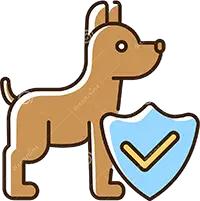

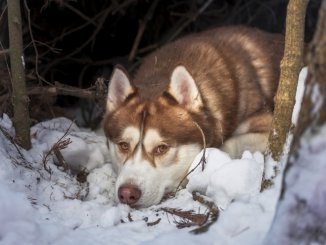

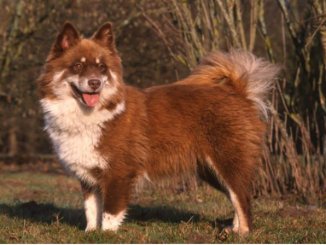
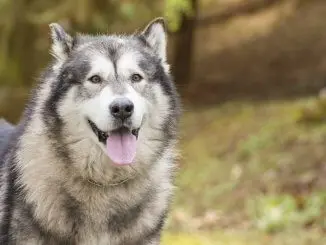
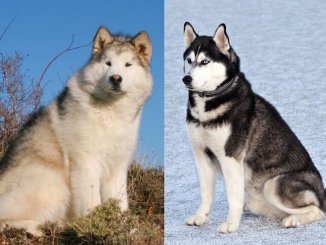
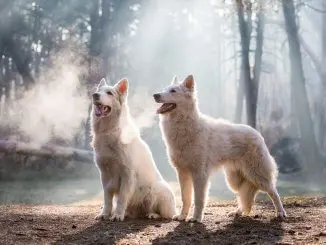

Be the first to comment